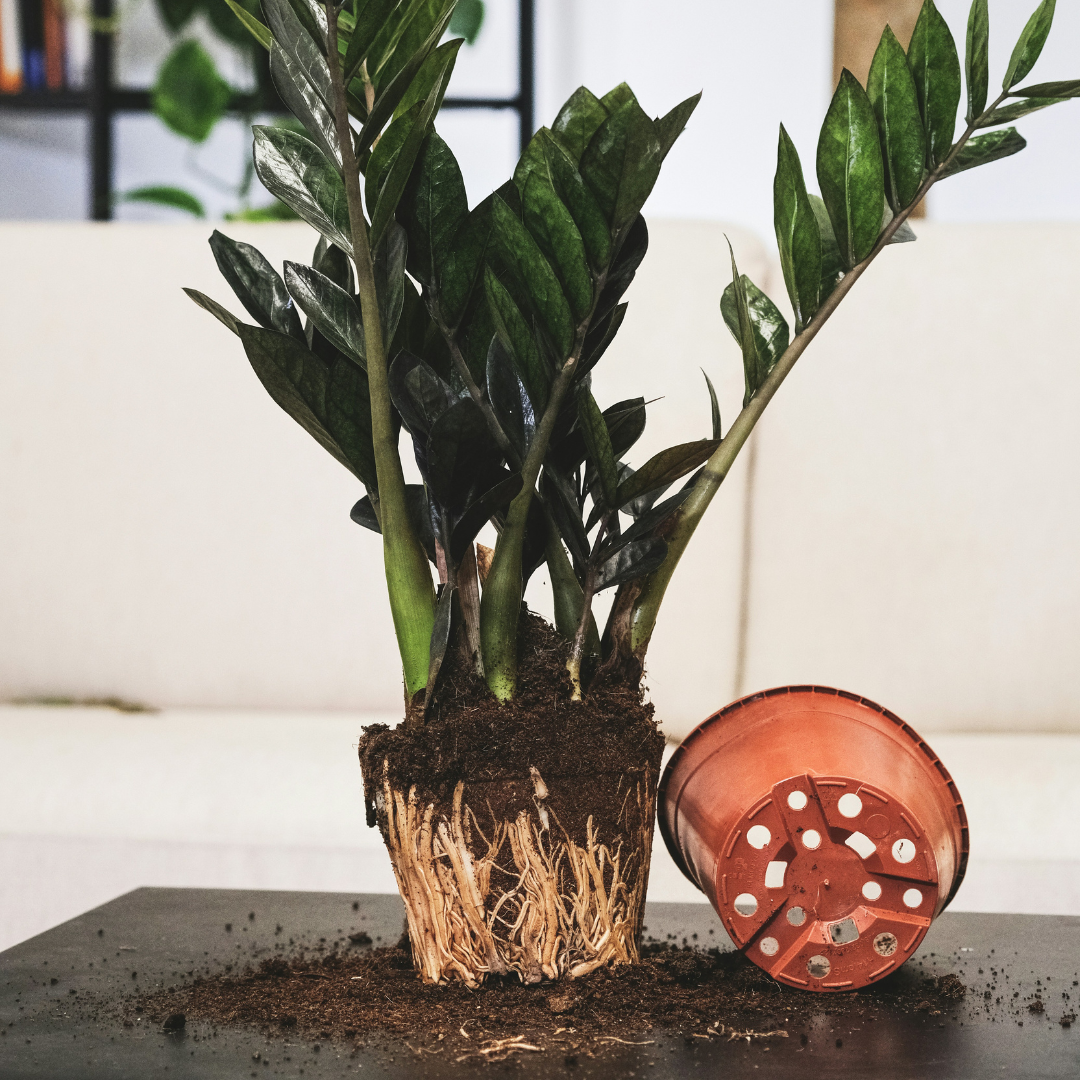How to Identify Plant Roots Overview
Knowing the health of your plants’ roots can dramatically improve its vigor. The same applies for container plants: knowing your roots can dramatically improve plant health and vigor. For example: if you are recognizing odd foliage problems such as leaf drop or discoloration, or your plant just seems to lack vigor, be sure to first take a peek at the root structure. We recommend that you simply turn the plant on its side, tap the entire root ball out of the pot and examine the color of the roots. If they are soft, brown and easily fall apart when you touch or pull on them, you can be assured that some or all of the root system has collapsed. If the roots are white or tan colored, succulent when you pull on them and have fleshy white tips, then your root system is healthy. Remember, some plants have fine roots and you may need to examine them with care, even use a magnifier. Without robust root development plants can’t thrive. Half the secret to growing beautiful specimens is having healthy roots.

What Collapses the Root System?
For the most part, poor root development is related to the presence of pathogens attacking the root system. Soil porosity, which is the amount of air the soil contains, is also related to root health. With more air in the soil the roots can “breathe” better, this lessens the chance for fungi to grow. That is where the term “an open and well-drained potting mix” comes from. Soil chemistry can also affect root development, but generally the modern potting soils are balanced in their acidity and nutrient content.
How Can I Maintain Healthy Roots?
The amount of water and fertilizer is directly related to maintaining healthy roots. First, watering plants when they are thirsty is not much different than drinking water when we are thirsty, of course we have to be able to understand the plant's signs of thirst. For most container plants, we recommend that you water when visual surface dryness appears. As simple as it sounds, watching how the soil changes color is an indicator of visual surface dryness. When the soil is dark it means that the soil is wet, as the soil begins to dry out it becomes lighter in color. On most plants there is a state between visual surface dryness and wilting foliage. Somewhere between these two conditions is when a plant needs to be given a drink. Remember, when it is time to water your plant, water thoroughly by letting a little water run out of the bottom of the pot.
The second way to maintain healthy roots is related to the amount of fertilizer given. When a plant goes into its winter rest (or slower growth period) do not over fertilize; in most cases you should stop feeding all together. If a plant is prone to Sudden Death Syndrome (SDS), which generally occurs in the heat of summer (especially on myrtles, prostantheras and anisodonteas), go easy on the feed or eliminate feed altogether. A plant grown on the leaner side at these times tends to resist disease better. We were having great difficulty with our myrtles, especially the older plants, which would collapse in the summer especially under heat and high moisture. A disease organism was the culprit. At first we applied fungicides to correct the problem. The fungicides worked as long as they were reapplied on a regular basis. However, if the treatment regime stopped, the problem re-occurred. Once we drastically reduced the feed, our collection of myrtles regained their root health and we have not had a problem since. No longer do we have to use fungicides, we simply keep an eye on their feeding schedule.
Should I Cut or Fray the Roots Before Re-potting?
The answer is NO! We have found, the less we disturb the roots, the faster and healthier a plant will grow. No matter how impacted or pot bound the root ball is, we have always seen it grow out on its own. The confusion seems to come from the practice in transplanting nursery stock. Plants such as azaleas and rhododendrons have fine roots and their root balls become so pot bound that they don’t grow out into the new soil at planting. As far as tropical container plants go, please do not fray or cut the root ball. In fact, disturbing the root system of our young plants, which are in 2.5” pots, can drastically reduce their vigor and even kill them.
At Logee’s we have repotted hundreds of thousands of plants and never once have we had a plant that didn’t grow into its new soil. We NEVER cut or fray the roots. We simply, move the plant up by one or two sizes with the least disturbance to the roots possible.
Currently, in potted horticulture, young plants are grown in what is called a plug or cell, which neatly contains the roots of the young propagation. This method allows our growers the ability to move the young plant into a larger pot without disturbing the roots. We are able to cut the growing time in half and finish a plant quickly because we have not disturbed the root system. In days past, plants were rooted or seeds were sown in flats and then they were uprooted and repotted with a great deal of root disturbance. A re-establishing time was needed and even a certain amount of mortality was expected in certain varieties. Today our plants never know they are being moved into bigger pots and they continue to flourish without a disruption to their root system. So remember, with a little knowledge about roots, you will reap the rewards of growing healthy and vigorous plants.

